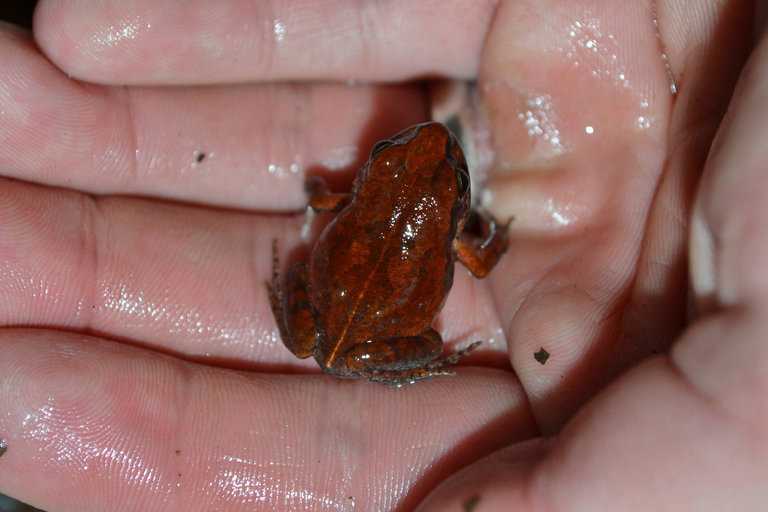
HARARE, Zimbabwe — The cave squeaker is back.
Researchers in Zimbabwe say they have found a rare frog that has not been seen in decades.
The Arthroleptis troglodytes, below, also known as the cave squeaker because of its preferred habitat, was discovered in 1962, but there were no reported sightings of the elusive amphibian after that. An international “red list” of threatened species tagged them as critically endangered and possibly extinct.
Robert Hopkins, a researcher at the Natural History Museum of Zimbabwe, in Bulawayo, said his team had found four specimens of the frog in its known habitat of Chimanimani, a mountainous area in eastern Zimbabwe.
The research team found the first male specimen on Dec. 3 after they followed an animal call they had not heard before, Mr. Hopkins said. They then discovered two other males and a female. Mr. Hopkins said he been looking for the cave squeaker for eight years.
“I was not with my team when they were found,” he said. “I was at the base. I can no longer climb the mountains as I am 75.”
Thank you for subscribing.
An error has occurred. Please try again later.
You are already subscribed to this email.
View all New York Times newsletters.
Researchers plan to breed more frogs with the ones taken from their habitat and then reintroduce them to the mountain summit. The frog is tiny and light brown with dark spots.
Now the authorities fear for the frogs’ security, especially because scientists’ and researchers’ huge interest could result in the frog being captured and illegally exported. Mr. Hopkins said 16 specimens were on display at various museums, including the British Museum.
Caroline Washaya-Moyo, a spokeswoman for the Zimbabwe National Parks and Wildlife Management Authority, said: “We are expecting an influx of scientists looking for it. We will do everything in our power to protect and conserve the frog.”
HARARE, Zimbabwe — The cave squeaker is back.
Researchers in Zimbabwe say they have found a rare frog that has not been seen in decades.
The Arthroleptis troglodytes, below, also known as the cave squeaker because of its preferred habitat, was discovered in 1962, but there were no reported sightings of the elusive amphibian after that. An international “red list” of threatened species tagged them as critically endangered and possibly extinct.
Robert Hopkins, a researcher at the Natural History Museum of Zimbabwe, in Bulawayo, said his team had found four specimens of the frog in its known habitat of Chimanimani, a mountainous area in eastern Zimbabwe.
The research team found the first male specimen on Dec. 3 after they followed an animal call they had not heard before, Mr. Hopkins said. They then discovered two other males and a female. Mr. Hopkins said he been looking for the cave squeaker for eight years.
“I was not with my team when they were found,” he said. “I was at the base. I can no longer climb the mountains as I am 75.”
Thank you for subscribing.
An error has occurred. Please try again later.
You are already subscribed to this email.
View all New York Times newsletters.
Researchers plan to breed more frogs with the ones taken from their habitat and then reintroduce them to the mountain summit. The frog is tiny and light brown with dark spots.
Now the authorities fear for the frogs’ security, especially because scientists’ and researchers’ huge interest could result in the frog being captured and illegally exported. Mr. Hopkins said 16 specimens were on display at various museums, including the British Museum.
Caroline Washaya-Moyo, a spokeswoman for the Zimbabwe National Parks and Wildlife Management Authority, said: “We are expecting an influx of scientists looking for it. We will do everything in our power to protect and conserve the frog.”
We’re interested in your feedback on this page. Tell us what you think.



























